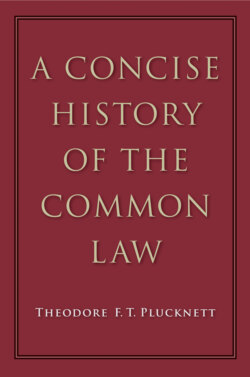Читать книгу A Concise History of the Common Law - Theodore F. T. Plucknett - Страница 33
На сайте Литреса книга снята с продажи.
THE BARONS’ WARS
ОглавлениеThe rest of the reign of Henry III is notable chiefly for the revolt of the barons in 1258, which repeats the main outlines of the revolt against King John. The results also were similar. A revolutionary organisation was set up by the barons with the idea of reducing the Crown to complete powerlessness; and this, like the previous attempt in 1215, had soon to be abandoned. But in this later struggle the barons had been dependent to a considerable extent upon the assistance of smaller landowners who also had to be satisfied by a measure of reform. Recent work on this period has shown how largely it was concerned with legal problems, and to lawyers there are two especial reasons for studying the baronial revolt with care. First, it was the age of Bracton,1 who ceased to revise his great treatise just as the crisis approached; and secondly, it was the one occasion in English history when the laity carried out vi et armis an important and complicated programme of law reform. Its full significance can hardly yet be appreciated, but recent research has already shown that the development of the forms of action, and especially trespass, during this period is of importance,2 that the working of the law of seisin was also the cause of difficulty,3 and that the abuse of the lord’s right of extra-judicial distress—“the beginning of all wars,” as Simon de Montfort called it4—was a problem of great urgency. Many of the reforms the victorious barons effected were continued after the fall of Simon de Montfort and became the Statute of Marlborough, 1267. Even before his accession Prince Edward took part in this post-war period of reconstruction, and the Statute of Marlborough is therefore really a part of the great programme of law reform which was carried out in the reign of Edward I.
